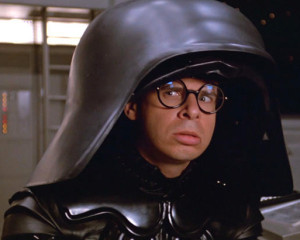
The recent study has removed Lord Helmet’s original skepticism about buckyballs as the originator of DIBs.
At journal club today, we discussed the recent paper from Maier and colleagues which has solved the long-standing mystery of diffuse interstellar bands or DIBs.
These light absorption features were originally discovered by Heger way back in 1919, only a few months after the end of World War I. Their discrete absorption peaks are pervasive throughout visible wavelengths, indicating they are not simply due light-scattering by interstellar dust. The fact that they appear unchanged no matter the nature of the star whose light they absorb also suggests they don’t arise from the star itself. Instead, they must lay somewhere in the vast space between the Earth and the star.
Astronomers proposed DIBs might arise from dust grains, carbon chains, and even floating bacteria. Bucky balls, large soccer-ball-shaped carbon molecules, had also been proposed as candidates since they were discovered in white dwarf stars.
But deciding which candidate was actually the culprit required meticulous and highly sensitive lab work to recreate the extreme conditions of outer space, where temperatures are near absolute zero and gas pressures can be 10 million times smaller than at Earth’s surface. After twenty years of work, Maier and his team in Switzerland and Germany finally managed to create a little pocket of interstellar space in their lab.
By carefully ionizing buckyballs and introducing them into a cold He gas, they showed the spectral features created by the buckyballs in association with He matched almost exactly the spectral features of some DIBs.
The upshot of this is that the spectral forest of DIBs found at other wavelengths likely points to the prevalence of other large and complex molecules self-assembling in space, so this discovery is just the tip of the chemical iceberg. It has even been suggested that the complex molecular precursors for life originated in interstellar space in the same way as the buckyballs.
Whether that’s true or not, this discovery shows that the vast and lonely spaces between the stars aren’t quite as empty as they seem.
Journal club attendees included Jennifer Briggs, Emily Jensen, and Tyler Wade.